
CashOnHand - Transportation - Brandon - English
- Subject:
- Business and Communication
- Education
- Finance
- Special Education
- Material Type:
- Lesson
- Date Added:
- 07/19/2021

CashOnHand - Transportation - Brandon - English

CashOnHand - Transportation - Brandon - Spanish
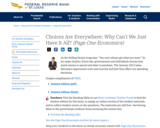
As the Rolling Stones song says, "You can't always get what you want." So we make choices. Every day, governments and individuals choose how much money to spend and what to purchase. The January 2013 issue discusses opportunity costs and scarcity and how they effect our spending decisions.
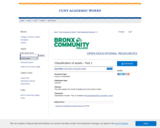
This video explains the concept of liquidity and current assets in detail.
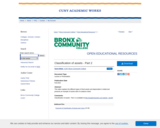
This video explains the different types of fixed assets and depreciation in detail and presents an example of assets side of a balance sheet.

This video explains types of liabilities in detail and lists the three major categories of equity.
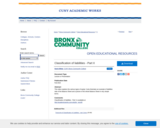
This video explains the various types of equity. It also illustrates an example of liabilities side of the Balance Sheet and a picture of the whole Balance Sheet in very simple terms.
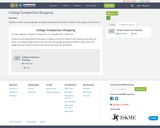
Students compare the average debt and salary of graduates with different majors at the colleges of their choice.

Lecture notes on limitations of the value at risk model, and conditinal value at risk models for financial risk management

This course provides a solid understanding of consumer decision-making and how new products and services are developed, especially given the rapid pace of innovation and regulatory change, to help students succeed in consumer finance today. Specific examples will be drawn from retirement saving products, credit cards, peer to peer lending, cryptocurrencies, and financial advising.

Overview: This assignment goes over 11 of the Consumer Protection Laws. There is a presentation with a project on it and a project page included. This lesson can be a stand alone lesson or be a second part to the Consumer Rights lesson also posted on the OER.
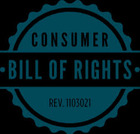
Overview: This lesson goes over the eight elements of the Consumer BIll of Rights. There is a presentation, notes page and assignment/project titled 8 Student Rights. This lesson can be a stand alone lesson or it can be a two part lesson. Part 1 Consumer Rights, Part 2 Consumer Protection Laws also found on the OER.

The onset of the COVID-19 pandemic changed consumer spending habits. The January 2021 issue of Page One Economics® reviews how people substituted meals purchased at restaurants with meals cooked at home. Also, people traveled less and the demand for hotel services decreased. As a result, both employment and prices declined in the leisure and hospitality industry.
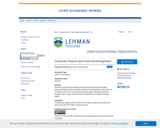
This lecture discusses the importance of financial information in both individuals personal and business lives. It includes description of the important features of the four main types of firms. Then, discusses the three main types of decisions a financial manager makes. Finally, it discusses the tax implications for the different corporate entities.
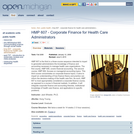
HMP 607 is the third in a three-course sequence intended to impart to generalist administrators the knowledge of finance and accounting necessary to manage health care organizations. The first course, HMP 608, covers financial accounting. The second course, HMP 606, focuses on managerial accounting topics. This third course concentrates on corporate finance topics. It aims to impart an understanding of how finance theory and practice can inform the decision-making of the health care firm. As such, HMP 607 is most appropriately considered a corporate finance course, as opposed to a course in financial markets. In addition, it will integrate corporate finance and accounting theories, institutional knowledge of health care finance, and applications to specific problems.

This course introduces managers and other professionals working in the nonprofit sector to Value Based Management. The course attempts to establish a common framework for how nonprofit's and non-governmental organizations can apply Value Based Management in such areas as Strategic Planning, Resource Development, Leadership, and Performance Measurement. Course Level: Intermediate - A good understanding of business concepts is useful for fully understanding this course. A review of other Short Courses is also recommended since this course covers topics that may be covered in greater deal in another short course. Recommended for 2.0 hours of CPE. Course Method: Inter-active self study with audio clips, self-grading exam, and certificate of completion.

This lesson is an introductory lesson to Credit. It leads into my other lesson on Creditworthiness nicely. I have included a presentation and a crossword puzzle.
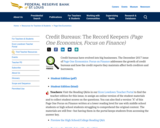
Credit bureaus have evolved into big businesses. The December 2017 issue of Page One Economics: Focus on Finance addresses the growth of credit bureaus and how the credit reports they maintain affect both creditors and borrowers.

This lesson is to help students first learn applicable terms related to credit cards. They will then analyze aspects and features of credit cards to know how to determine which would be best for various situations.

With record-level credit card debt in the headlines, this December 2023 issue of Focus on Finance addresses credit card history, statistics, and usage, as well as reasons for the increase in credit card debt. The information in the article can help in managing credit card accounts, and students will better understand the economics of using revolving credit as they prepare to become cardholders!